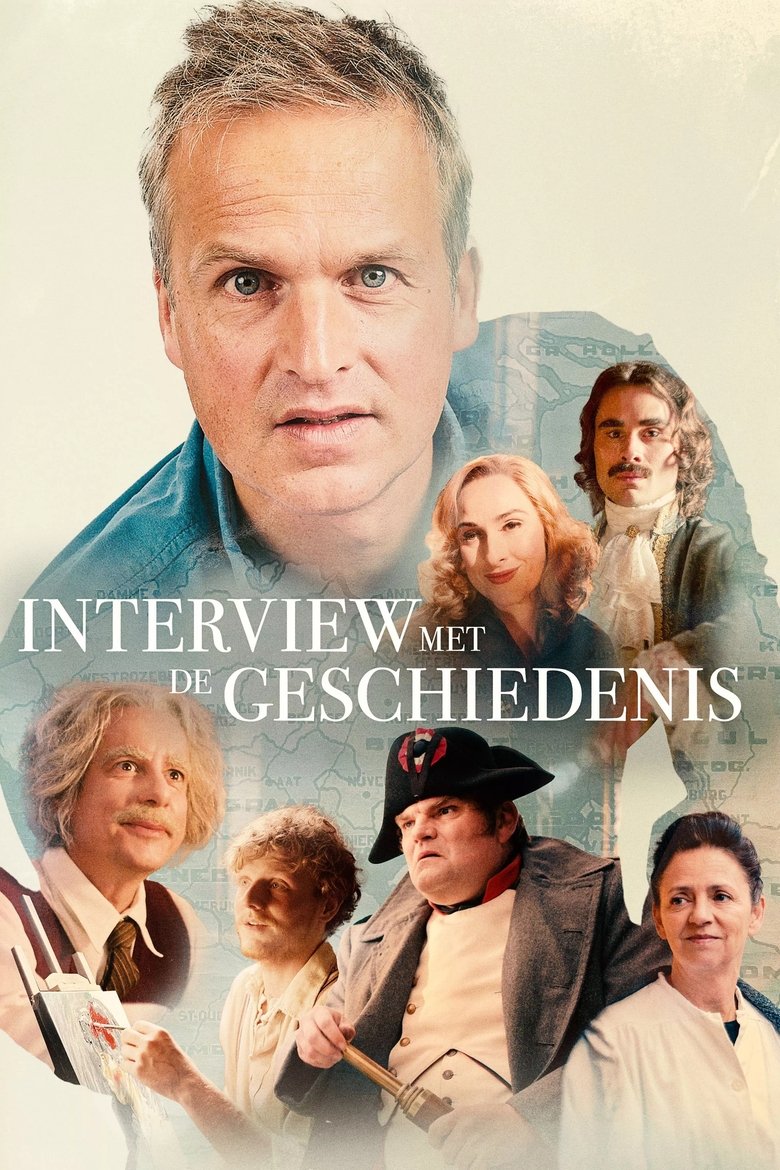
Historische Iconen
What if you could interview Napoleon Bonaparte on the eve of the Battle of Waterloo? Or Vincent van Gogh in his Antwerp student room? Arnout Hauben travels back in time and speaks with historical figures at key moments in their lives, when they were guests in the Netherlands or Belgium.
01. Marie Curie (1867 - 1934)
Arnout meets Marie Curie in Veurne, just as the First World War has erupted in full force. In a hastily set up front hospital, she and her daughter Irène try to save wounded soldiers using a revolutionary technique: radiology. A hundred years later, Arnout stumbles upon the diary of one of her patients, and the story takes an unexpected turn.
02. Peter de Grote (1672 - 1725)
The Russian Tsar Peter the Great disguised himself as a laborer to learn shipbuilding in the Low Countries. He believed that shipping and trade could help impoverished Russia break its isolation. In 1697, Arnout met him at the shipyard in Zaandam. In 1717, he spoke with the now all-powerful Peter the Great again. In 2025, Arnout visited the Tsar Peter House in Zaandam with curator Farida Guseynova, spoke with Alexander de Vos about shipbuilding at the time, and visited a replica of the first frigate Peter the Great ever built. Finally, Arnout spoke with Prime Minister Bart De Wever and the very last descendants of the Tsar.
03. Marlene Dietrich (1901 - 1992)
Before the war, actress Marlene Dietrich renounced her German nationality and became an American citizen. In 1944, she went to the front with the American army to support the soldiers. Arnout met her in 1944 at General Patton's headquarters. In 2025, Arnout met the son of the director of the film that made Dietrich a world star and Dietrich's grandson, who was researching his grandmother's wartime past. Together with General Patton's granddaughter, Arnout traveled to Bastogne and, in Berlin, met Marlene's friends, the Nazi hunters Serge and Beate Klarsfeld. Their long letters were preserved.
04. Vincent van Gogh (1853 - 1890)
Painter Vincent van Gogh's devotion to art, his faith, and the people around him often drove both himself and others to despair. Arnout met him in 1885 in an attic room in Antwerp. His brother Theo tried to sell the work in Paris, but no one was interested. In 2025, Arnout was in Vincent's birthplace, Zundert, and walked past the grave of Vincent's stillborn brother. Arnout also met Filip Depuydt, who was involved in renovating the small house in the Borinage region where Van Gogh lived for two years. Visual artist Johan Tahon was deeply fascinated by Van Gogh and created a major artwork of him.
05. Albert Einstein (1879 - 1955)
Albert Einstein was the brightest mind on earth, but also a rebel who passionately challenged rules and dogma. Arnout met him (Nico Sturm) in 1933 at Villa Savoyarde in De Haan. It seemed far removed from the German threat in Europe, but the silence was deceptive. The Nazis had blacklisted Einstein; returning to his home in Berlin was no longer an option.
06. Napoleon Bonaparte (1769 – 1821)
Napoleon was a strong strategist and a visionary statesman, but he could not relinquish power and ultimately succumbed to his own greatness. Arnout met the Emperor of France (Stefaan Degand) in 1815 in the village of Ligny, two days before his final campaign. Afterwards, Arnout stood silently beside Napoleon at Waterloo as his army was crushed. Napoleon's dream ended with a defeat that stripped him of his last vestige of power.